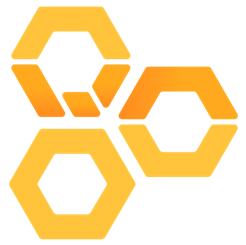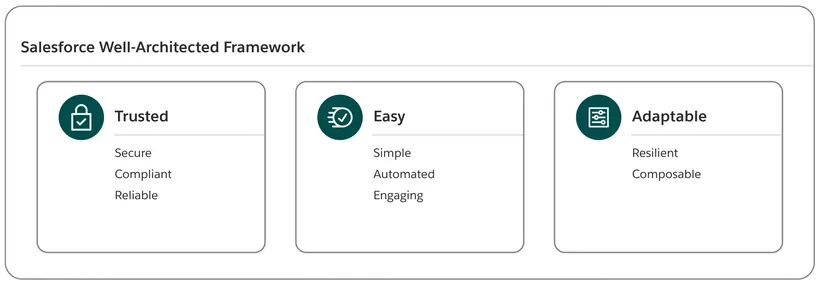Well-Architected
Why Well-Architected
Imagine a world without law, without order. This inquiry drove some of the most celebrated philosophers of our time to examine ideas that would ignite revolutions. In his masterpiece the Republic, circa 375 BC, Plato famously penned, “our need will be the real creator,” loosely translating into the familiar “necessity is the mother of invention.” Fast-forward to the fourth industrial revolution, we’re still struggling to organize around a central technology ethos–enter the AWS Well-Architected framework.
The Origin Story
The AWS Well-Architected framework was born out of necessity in response to an increasing demand to bring order out of chaos. At the time, AWS provided excellent technical documentation to support its expansive product portfolio. However, AWS lacked practical tools and resources for architects to evaluate their solution design against a proven set of trusted guidelines. As a result, in 2012, AWS created the Well-Architected Framework as an internal tool–understanding that employees, customers, and partners needed help.

Operational Excellence
Security
Reliability
Performance Efficiency
Cost Optimization
Sustainability
The Well-Architected framework is a set of design principles intended to provide prescriptive guidance, recommendations, and best practices to build and operate high-performing cloud architectures. At its core, the AWS Well-Architected framework is anchored with six foundational pillars: 1) Operational Excellence, 2) Security, 3) Reliability, 4) Performance Efficiency, 5) Cost Optimization, and 6) Sustainability. Essentially, These standards of practice offer a practical approach to implementing designs that will scale over time. The bottom line is consistent and predictable outcomes.
In 2015, AWS publicly launched the framework at their annual re:Invent conference in the form of a white paper. The idea was revolutionary, causing a groundswell of interest and excitement. The publication outlined the most complete and thorough collection of solution design and architectural tenets to date. This initial release set in motion a wave of innovation across the industry, enabling a surge of digital transformation around the world.

Where are we now?
The framework’s guiding principles have evolved and matured since its inception in 2012. In addition, AWS has introduced guidance for industry-specific and technological domains to further expand and augment the framework’s capabilities. In the years to follow its initial release, the framework has gained popularity amongst leading cloud providers like Salesforce, Google, and Microsoft–adopting the foundational principles for their platforms. These technology providers have authored their opinionated views of the Well-Architected framework initially inspired by AWS.


Trusted by Professionals
the World’s Top Solution Architects and Technical Architects.






Comparing Frameworks
Technology providers have authored their opinionated views of the Well-Architected framework initially inspired by AWS. See how they compare.
| AWS | Microsoft | Oracle | |
|---|---|---|---|
| Operational Excellence | Operational Excellence | Operational Excellence | Operational Efficiency |
| Security | Security, Privacy, and Compliance | Security | Security and Compliance |
| Reliability | Reliability | Reliability | Reliability and Resilience |
| Performance Efficiency | Performance Optimization | Performance Efficiency | – |
| Cost Optimization | Cost Optimization | Cost Optimization | Performance and Cost optimization |
| Sustainability | – | – | – |
Salesforce
Well-Architected
Salesforce is the latest cloud provider to enter the Well-Architected space. They introduced their interpretation of the Well-Architected framework in the second half of 2022. At first glance, the foundational principles (“pillars”) are a far departure from the original, highly modified. It appears that Salesforce launched this opinionated view of the framework, tailored to fit their solutions and customers. This blog will primarily explore concepts centered around Salesforce’s Well-Architected framework.

Secure
Organizational Security
- Authentication
- Authorization
Session Security
- Session Management
- Device Access
- Threat Detection and Response
Data Security
- Sharing and Visibility
- Encryption
Compliant
Legal Adherence
- Data Privacy
- Localization
Ethical Standards
- Company Policies
- Artificial Intelligence
Accessibility
- Data Entry
- Navigation
Reliable
Availability
- Risk Assessment
- Failure Mitigation Strategy
Performance
- Throughput Optimization
- Latency Optimization
Scalability
- Data Model Optimization
- Data Volume Management
- Scale Testing
Simple
Readability
- Design Standards
- Documentation
Maintainability
- Standard vs Custom
- Technical Debt
Intentionality
- Roadmapping
- Governance
Automated
Clear Logic
- Optimization
- Planning for Scale
Data Integrity
- Transaction Handling
- Error Handling
Alignment to Business Value
- KPIs
- Prioritization
Engaging
Streamlined
- Navigation
- Forms
- Form Factor
Helpful
- Notifications & Messaging
- In-App Guidance
- Recognition & Rewards
Incident Response
- Prioritze Recovery
- Triage Effectively
- Monitor and Alert
Resilient
Continuity Planning
- Define Business Continuity for Salesforce
- Plan for Technology Continuity
Application Lifecycle Management
- Release Management
- Environment Strategy
- Testing Strategy
Separation of Concerns
- Orient to Business Capability
- Manage State
Composable
Interoperability
- Messaging and Eventing
- API Management
Packageability
- Loose Coupling
- Dependency Management